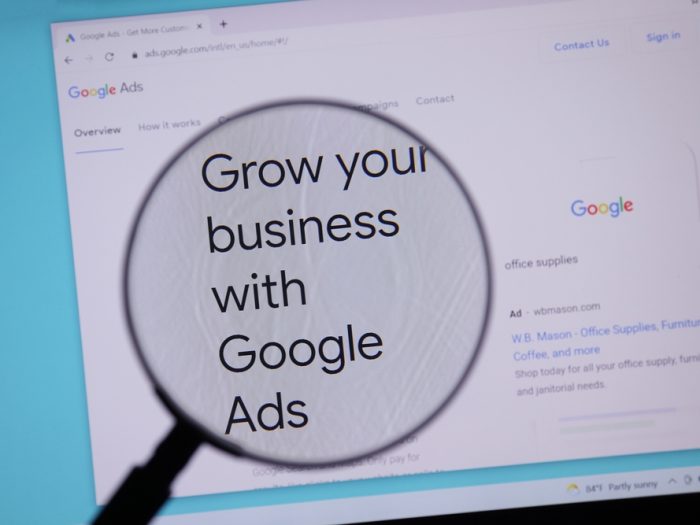Smart Campaigns: How to Optimise Your Google Ads
Google Ads landscape has changed significantly over the past few years. Advertisers must learn how to adopt these changes so they can benefit their businesses. However, there is plenty of information to help you get a positive ROI. Here is our detailed guide on what to do and what not to do in order to optimise your ads, drive sales and grow your business.
Why Advertise on Google?
Why should businesses advertise on Google in the first place, then? It is not difficult to say that the main reason why businesses advertise on Google AdWords, is maximized conversion. The main purpose of doing AdWords is to generate sales, but depending on your business type, some businesses are not good for being advertised through Google Ads.
When deciding whether or not to advertise on Google, the main thing to consider is your budget. Sometimes the small online stores simply don’t have access to Google AdWords promotion because they just don’t have the budget to test with. Many small businesses are able to generate visitors in just a few hours, meaning some campaigns work that effectively bring traffic quickly.
When you ‘bid’ for the ad network, the fact that there are no other costs paid should set your mind at ease. Now you only pay for ads when customers agree to click on them. Google offers you various ad types, targeting abilities, fixed costs per click, track everything you are doing, optimize keywords, texts, and other elements.
You can program visits to specific users matching certain keywords, and also adjust your bids for each user to optimize your results. With the automatic nature of the service, you can ensure that the right users and right keywords are getting served and served to your effectiveness and performance. The predictability in Google Adwords is because you get the visitors you’re going to pay for by increasing your budget. Increasing your budget can be a good predictor of how effective a search advertisement will be. An experienced PPC Agency can always help optimise your ads and budget for the best results.
Optimising Google Ads in 2022
We started by mentioning Google Ads changing this year. It’s then crucial that you follow these tips if you are to prosper by 2022.
1. Smart Bidding
Google is no different in the use of AI and machine learning. Along with tools like Google Trends, Google Prediction, Google Assistant. If you’re tired of guessing your bidding strategy or getting it wrong at least you will start using this in 2022.
Smart Bidding uses machine learning and artificial intelligence to optimize the bidding strategy for specific conversion actions. As a user, all you need to do is enter an advertising goal. From here, Smart Bidding optimizes the campaign in an attempt to achieve this goal (while remaining within the budget).
This feature is very important to businesses because it also uses an automated approach that does not require manually chosen signals. In contrast, the manual bidding approach leaves many inaccurate signals unattainable.
3. Gallery Ads
Ever since Facebook introduced carousel ads, users have been calling for a Google competitor for this business model. Yet, it has finally arrived in 2019 to change the way that business owners monetize their mobile traffic. Appearing at the top of mobile search results, you can include up to eight images and text with each.
Rather than paying to appear, Google will only charge if a user starts to swipe through the images. As Google started to move away from text-only ads, it is the right time to experiment with other formats.
4. Desktop & Mobile Ads
More people use mobile devices to search than desktop, but they still convert most of their customers on their desktop devices. In other words, both are crucial to your daily business. At this rate, both need to be known since the likelihood early there’ll arise that customers transfer from desktop to mobile.
As compared to desktop, on mobile you need to streamline your ads. You can place your USP in the first sentence in-text ads, in the headline of headline ads, and in the description of in-display ads. On mobile, you also need less real estate compared with desktop, so all key details should be put in the first sentence. Use our tools for testing for both desktop and mobile variations, and optimize the campaign for each version to get the maximum conversion targets.
5. Discovery Ads
Today, Google added Discovery to their Google feed for users. It now offers interesting content to users even when they aren’t searching. Unlike other feeds, Google now just wants to provide new content to its users. Consumers come forth when searching, can control what is being displayed, and they have the ability to control where ads they have seen appear.
6. Negative Keywords
This is a fundamental technique that many businesses aren’t aware of. Using negative keywords controls the irrelevant search terms that keep you from ranking for pertinent ones. Using this simple trick, unnecessary traffic can be stopped from being shown on Google Ads. This will also save your budget because the irrelevant pages would no longer appear with a click, thus wasting your money.
7. Audience Segments
Google has continually expanded its targeting capabilities in order to remain competitive against Facebook. This has led to two interesting developments, Affinity Audiences and In-Market Audiences. The former helps marketers to build audiences based on browsing behaviour and interests whereas the latter seeks people actively comparing products and looking for solutions to a problem.
8. Landing Pages
Landing pages are necessary for your online marketing campaign to increase conversions. You must pay close attention to the landing page with the same standard of care that you would in any other area of your business. This article covers all aspects of landing pages in detail so you’ll know how to build the best landing pages with quality content for your purposes.
The main point to remember, when developing your content for your Google ad copy, is to continue the experience told in your links ad. There should be big, bold CTA buttons providing clear instructions to the reader. Although the call to action should be targeted but should not be too obvious. Remember that simply put, the “buy now” should be possible, but that the buyer should not be made immediately.
9. Detailed Analysis
Analysis of data that has been collected over time is more efficient than just relying on the response of the current performance because it provides more accurate insights into the strategy.
UTM codes, to be used at the end of your URL, will help you analyze your website to find up-and-coming problems. When the code works well, further the code can help you maximize your website marketing campaigns.
Conclusion:
Therefore, as with any platform, it is important to gain an understanding of how to use Google Ads effectively before just jumping in and giving it a go. By doing so, not only can you gain greater and quicker results but also save money that may have been accidentally wasted. Get in touch with a skilled Google Adwords Agency and watch your company grow with a positive ROI!




